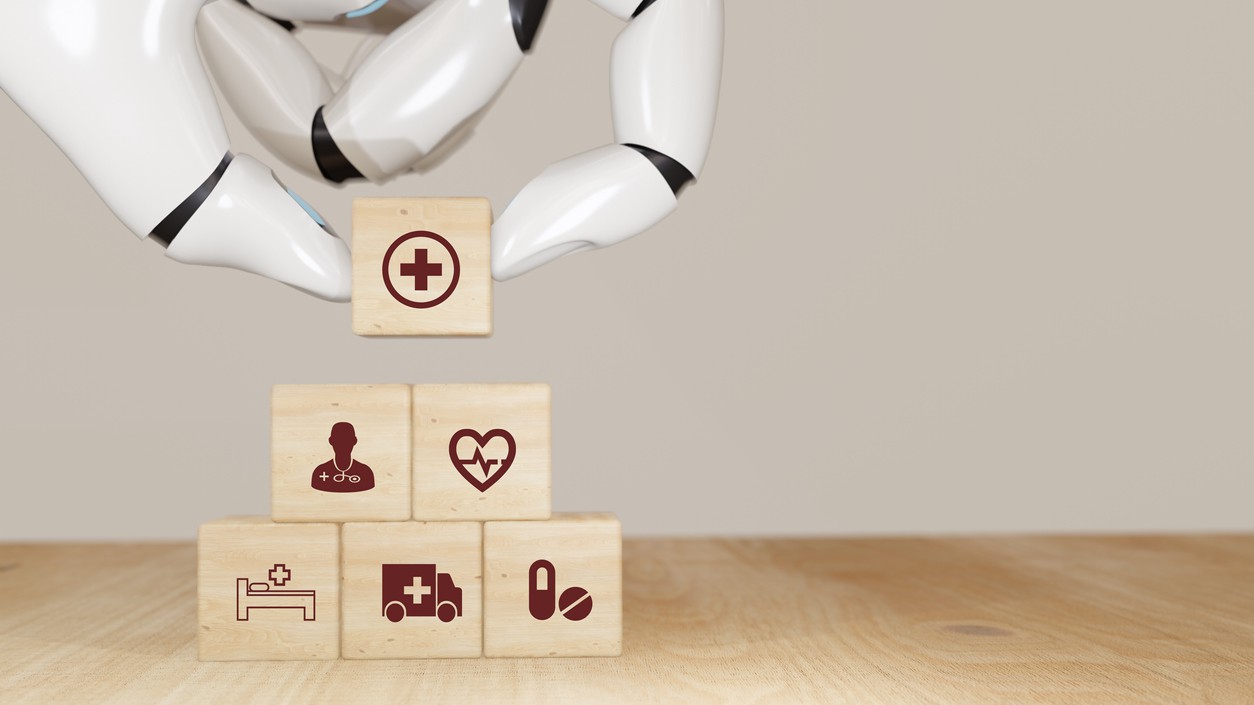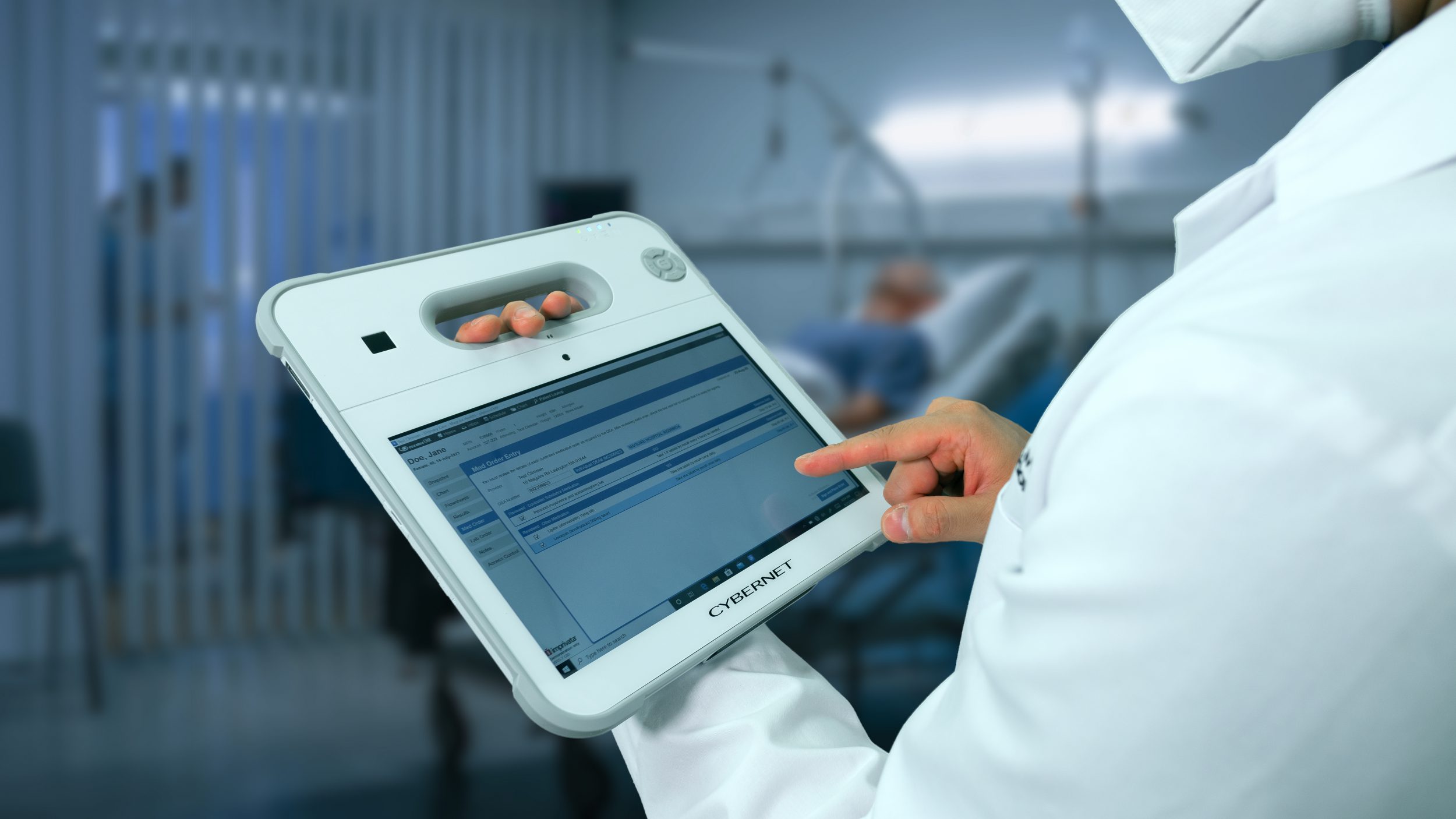The healthcare sector is always striving to minimize risks for staff and patients. Healthcare computers are used throughout most clinics and hospitals since they’ve been built from ground up not to interfere with the numerous medical devices. Staff receive special training to handle urgent situations like confrontations with visitors without panicking patients. And so on.
Surgical procedures carry risks by their very nature. To reduce them, many providers and medical groups are increasingly bringing artificial intelligence (AI) into the surgical process. We cover that process today, going through each phase and AI’s usefulness in it. We then discuss three features that make medical computers vital in the success of AI in healthcare.
How AI Is Used In Surgery
Article Guide
Surgery is usually broken down into three stages. AI in healthcare can be found in all three. An unofficial “fourth” stage, which is the prevention of surgery in the first place, also finds use of the technology.
Surgical Prevention
Almost all surgeries can have complications attached to it. It’s one of the reasons providers will try to avoid the option. Take a look at peripheral artery disease (PAD), which is the narrowing or blockage of blood vessels from the heart to the legs. Amputation of the limb may be the only option if severe enough. Providers thus strive to detect the condition as soon as possible.
Unfortunately, PAD can be difficult to detect. The healthcare industry is turning to artificial intelligence as one early diagnosis technology to detect and even anticipate PAD early enough to treat it without surgery.
Preoperative Phase
The preoperative stage is the preparation of the patient for surgery. It’s entered if surgery is determined to be the best option to treat their illness.
The surgeon makes a preoperative plan. AI can be used in several ways:
- Data on the patient is gathered. This ranges from the standard blood tests to X-ray, CT, ultrasound, PET, and/or MRI scans and images.
- Machine Learning (ML) is used to classify those scans and images.
- Deep Learning (DL) algorithms take those ML results where they detect, segment, and perform image registration. Depending on the complexity and/or sophistication of the DL, it may be able to detect abnormalities from CT scans, for example. This can then be brought to the surgeon’s attention including any risks associated with the surgical procedure.
Intraoperative Phase
The intraoperative phase is when the patient is brought into the operating theater, are treated and closed up, and rolled out. AI healthcare at this surgical phase vary and can consist of:
- Performance in minimal invasive surgeries. The most well-known of these are robot-assisted surgeries (RAS). This is where the surgeon controls various precision-guided robotic arms which actually do the procedure like incisions. RAS allows far smaller cuts and insertions than humanly possible. This in turn lowers the risk of infection, reduces blood loss, and achieves smaller scarring. AI used during RAS can assist from reducing the impact of tremors from the surgeon’s hands to the prevention of unintentional or accidental motions during eye surgeries.
- Interpret the surgeon’s facial expressions to control surgical medical devices like “FAce MOUSe,” which is a laparoscope controlled with the simple movement of their eyes, for example. The AI monitors their face and makes the proper adjustments to the instrument in real-time.
- Monitor and provide real-time data on the patient during the surgery. A 3D model of the surgical site can be rendered by the AI using intraoperative shape instantiation (also known as 3D Shape instantiation-endoscopic navigation). The surgeon can review the provided depth estimation, visual odometry, three-dimensional reconstruction and localization to figure out when, how, and how much to proceed with the operation.
- Efficient handling and passing surgical instruments to the surgeon via a robotic “scrub nurse.” This is all done non-verbally, with the AI monitoring the surgeon’s fingertips for signals.
Postoperative Phase
The postoperative phase is the final phase of surgery. It usually starts after the operation and lasts for the hospital stay. It may even continue after the patient’s been discharged depending on what procedure was performed.
Healthcare AI at this time is usually used for:
- Predict postoperative complications.
- Monitor high-risk patients closely and effectively.
Electronic health records (EHR) are used by the AI in both issues. They are combed by the algorithms to calculate chances for infection, levels of pain, etc. The medical staff can then provide postoperative care, offering everything from remote patient monitoring to hospital at home care. Points out Tyler Loftus, M.D., acute care surgeon and researcher: “We use the predictions of postoperative complications to determine whether a patient after surgery should be admitted to an intensive care unit with high-frequency surveillance and immediate availability of specialized personnel trained to diagnose and treat organ failure or to a hospital ward where they’ll be monitored intermittently about every four hours on average.”
Most Commonly Used Computers for AI Healthcare Surgery
Artificial intelligence used in all the above surgical phases need large amounts of data. Medical computers, already in use in most medical clinics, hospitals, and other healthcare facilities, are the best to provide that information from EHR to the patient’s vitals.
Medical grade
A computer that has been certified to be 60601-1 means it has met the highest requirements available for safe use in medical settings and, especially, near patients. Usually broken down into 60601-1 for safety and EMC 60601-1-2 for electromagnetic compatibility, a medical grade computer has been independently tested for such hazards like fire, ignition from flammable anesthetics, electrical shock, mechanical impact, excessive electrical energy output, and radiation. Of special importance to surgery is that the computer won’t interfere with potentially life-sustaining or saving nearby medical devices like an anesthesia machine.
Legacy device compatibility
Many operating rooms continue to use medical devices that are no longer supported by their original manufacturer. The above mentioned anesthesia machine is one such example. Medical computers will come with built-in ports, allowing them to connect with the devices and provide data for AI.
Medical grade monitors
While not computers, medical monitors are vital in operating rooms in providing clear and vivid imagery. This is important to the surgeons, who use them to see in dark and tight places in the patient’s body; and surgical staff like the anesthesiologist who are monitoring the patient’s vitals. Finally, medical grade monitors won’t interfere with the numerous medical devices found throughout the OR.
Closing Thoughts
AI in healthcare brings many benefits to the industry. Surgery sees benefits at every phase, as branches like machine learning and deep learning help surgeons prepare for surgery to post-op where predictive models provide best healing options for recovering patients.
Contact an expert at Cybernet if you’re interested in learning how medical computers are the best choices to work with the AI used in your operating rooms.
How AI Helps Healthcare Improve Post-Facility Care
January 21, 2021
Healthcare for any given person isn’t something that ends as soon as they leave the hospital. Bar certain conditions and emergencies, illnesses are things that a patient will need to manage and care not to exacerbate…
0 Comments9 Minutes
Understanding Healthcare AI’s Crucial Flaw and its Upcoming Solution
December 10, 2019
Artificial intelligence has been mystified to the point of near satire with films such as iRobot, Her, and more. And while we can never be too sure of what the future holds, knowing the current advancements and…
0 Comments13 Minutes
Best Medical Tablets for Healthcare
August 11, 2021
We are well into the digital revolution in Healthcare. Gone are the days of clipboards and storage rooms filled with folders of handwritten patient records. Medical Tablets are now the standard way medical data is…
0 Comments6 Minutes
You Can't
Learn from a Pop-up
But we can deliver knowledge to your inbox!
We dive deep in the industry looking for new trends, technology, news, and updates. We're happy to share them with you.
Knowledge, News, and Industry Updates Right in Your Inbox





